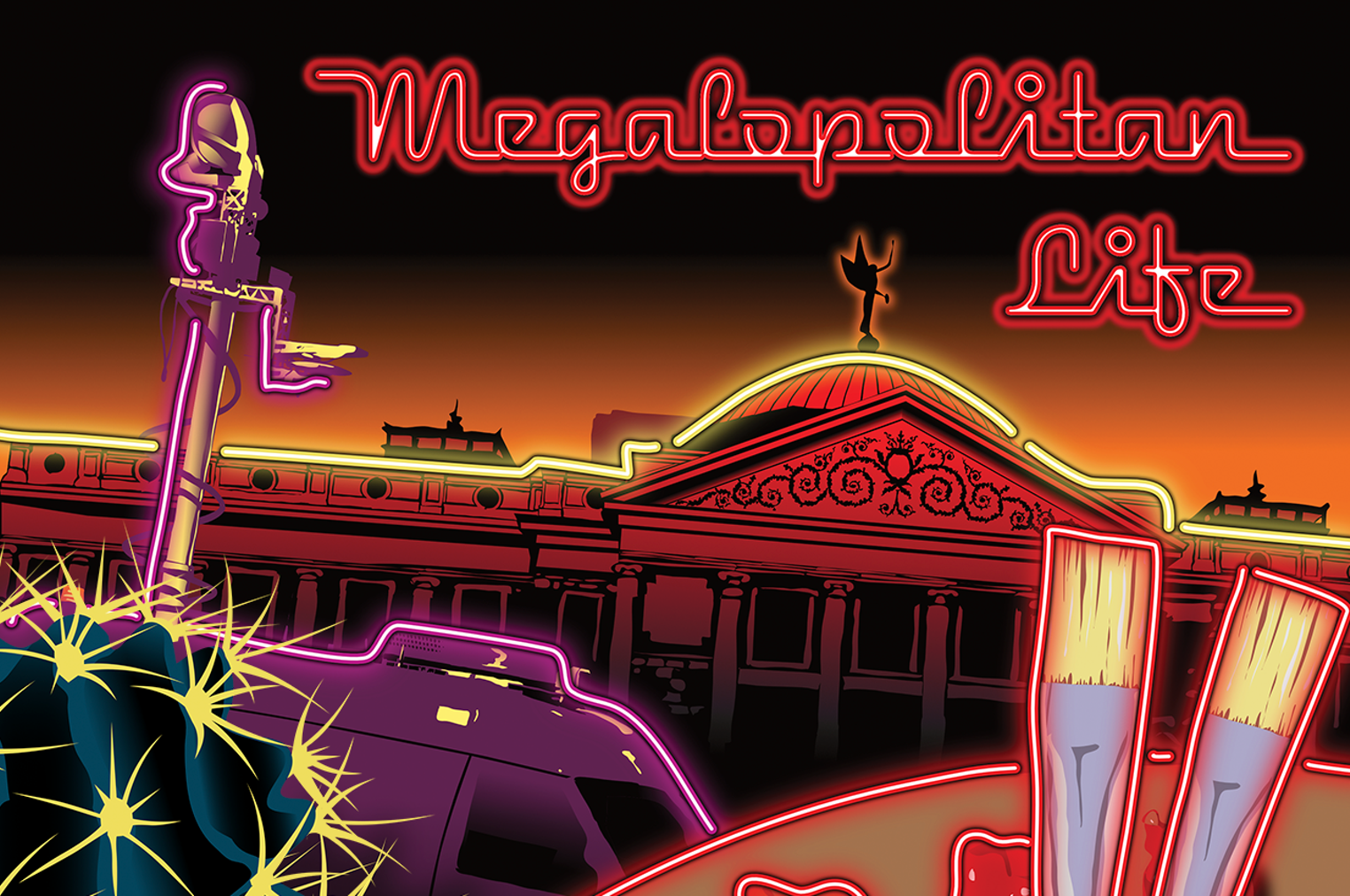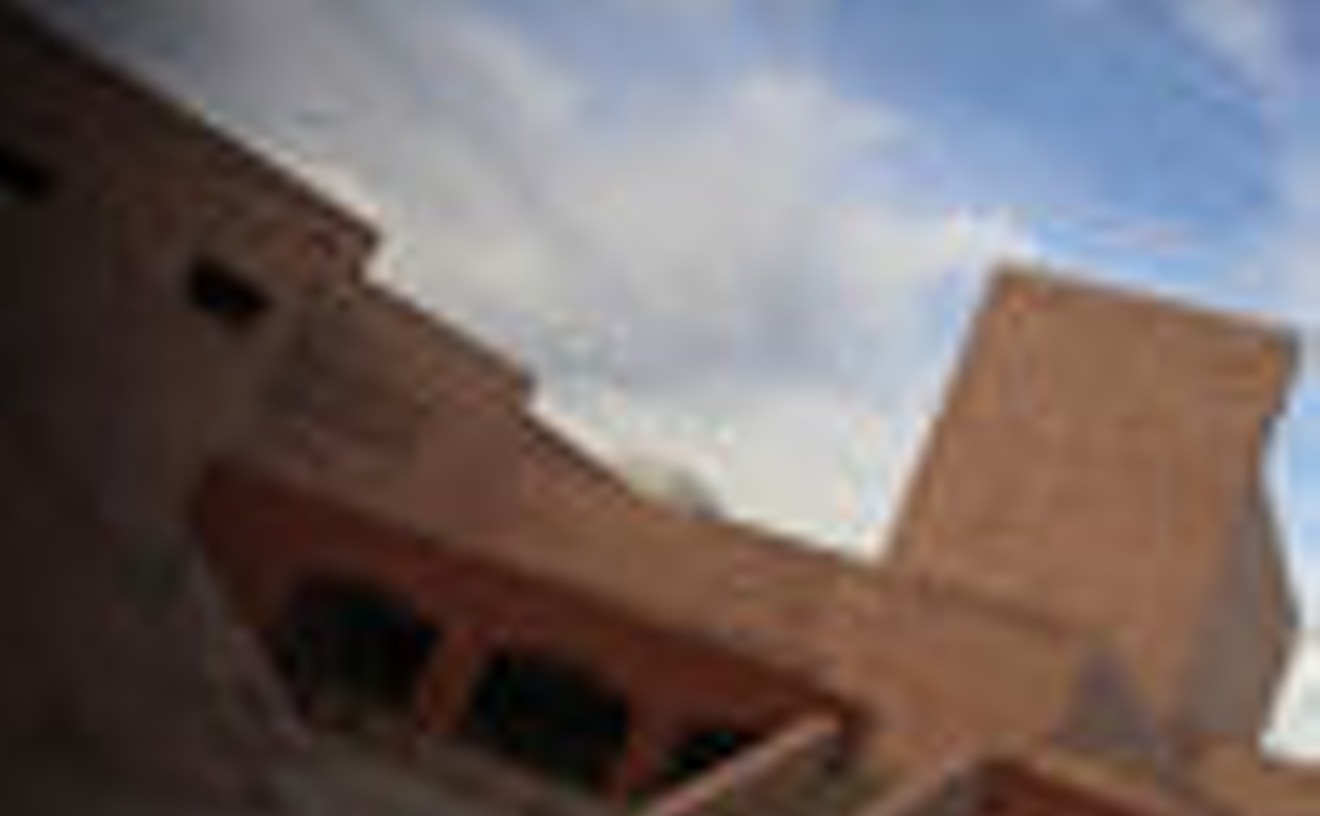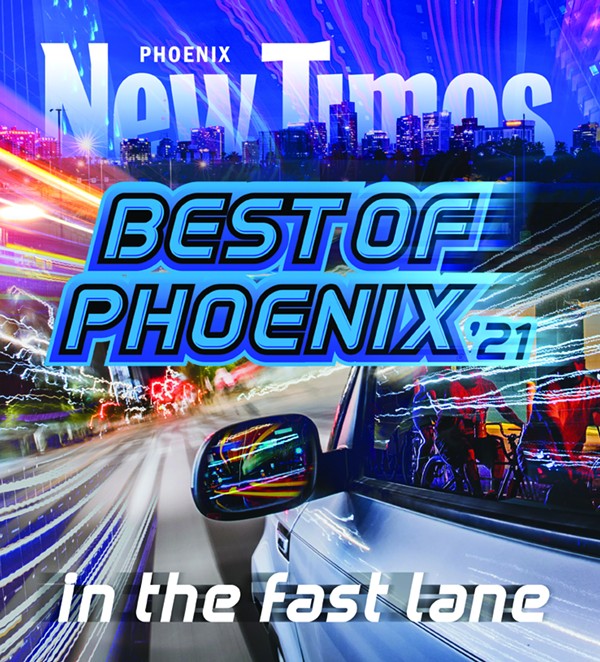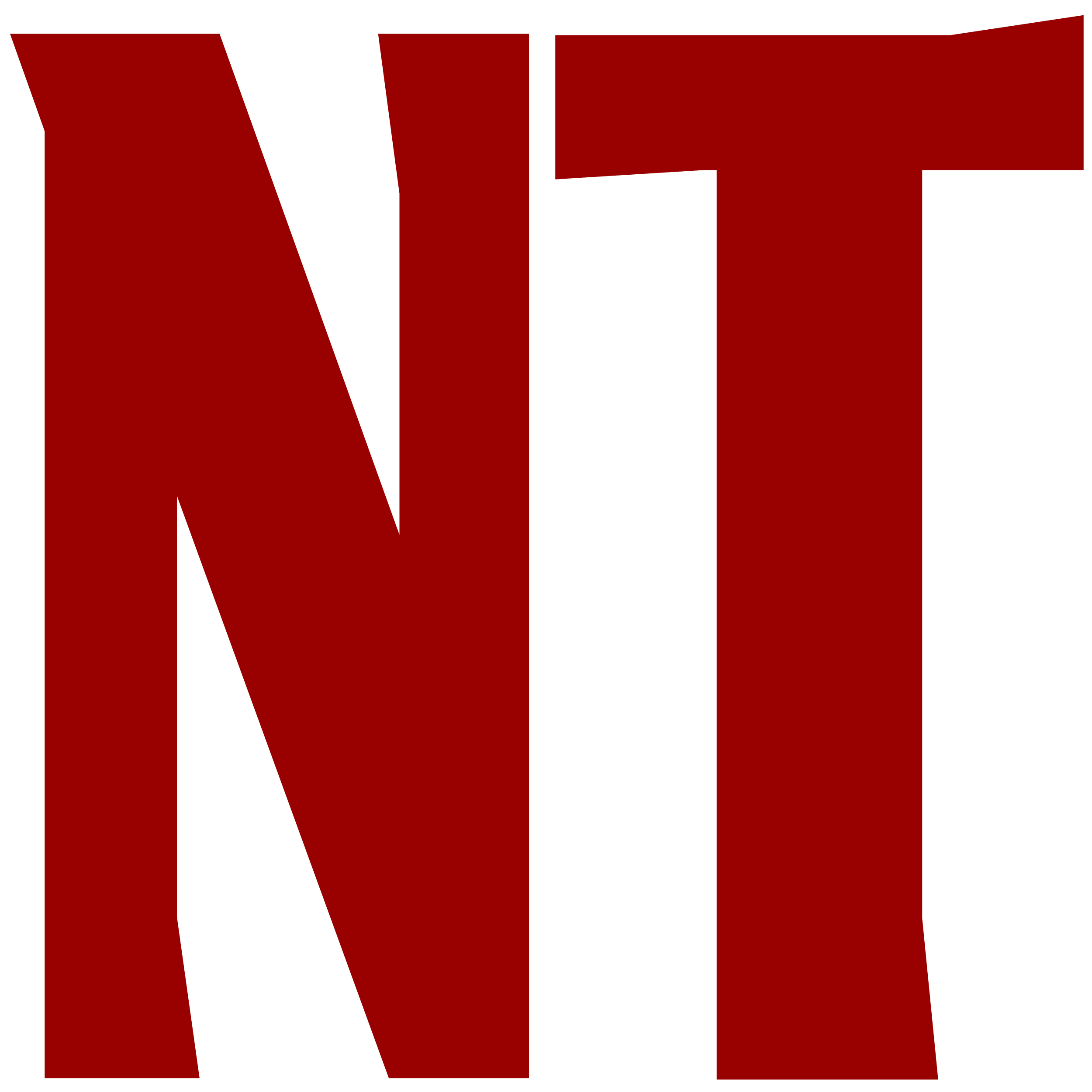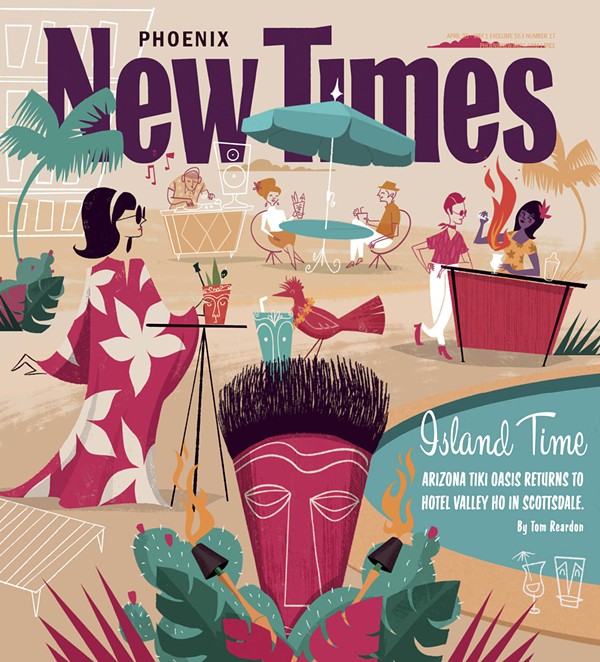Cruising Down Central Avenue
You’re cruising Central, headed south. Because you’ve lived in Phoenix longer than you care to remember, you’re seeing not just the buildings on either side of this wide expanse of road, but what used to stand in their places as well. You’ve been here so long, you remember when driving up and down this street, looking to hook up, was a weekend activity of every baby boomer in town.
Here on your right is Park Central Mall. Its recent facelift gives Phoenix’s first outdoor shopping mall a Midcentury Modern feel, but you’re not fooled. You recall when there were actual department stores there, where today there’s a collection of business offices, a handful of chain restaurants, and — huzzah! — a Starbucks. One thing they got right was returning the Walter Emory Sun Worshipper statue, a long-ago Park Central mainstay, to the property. Even if it is on the wrong side of the mall.


